


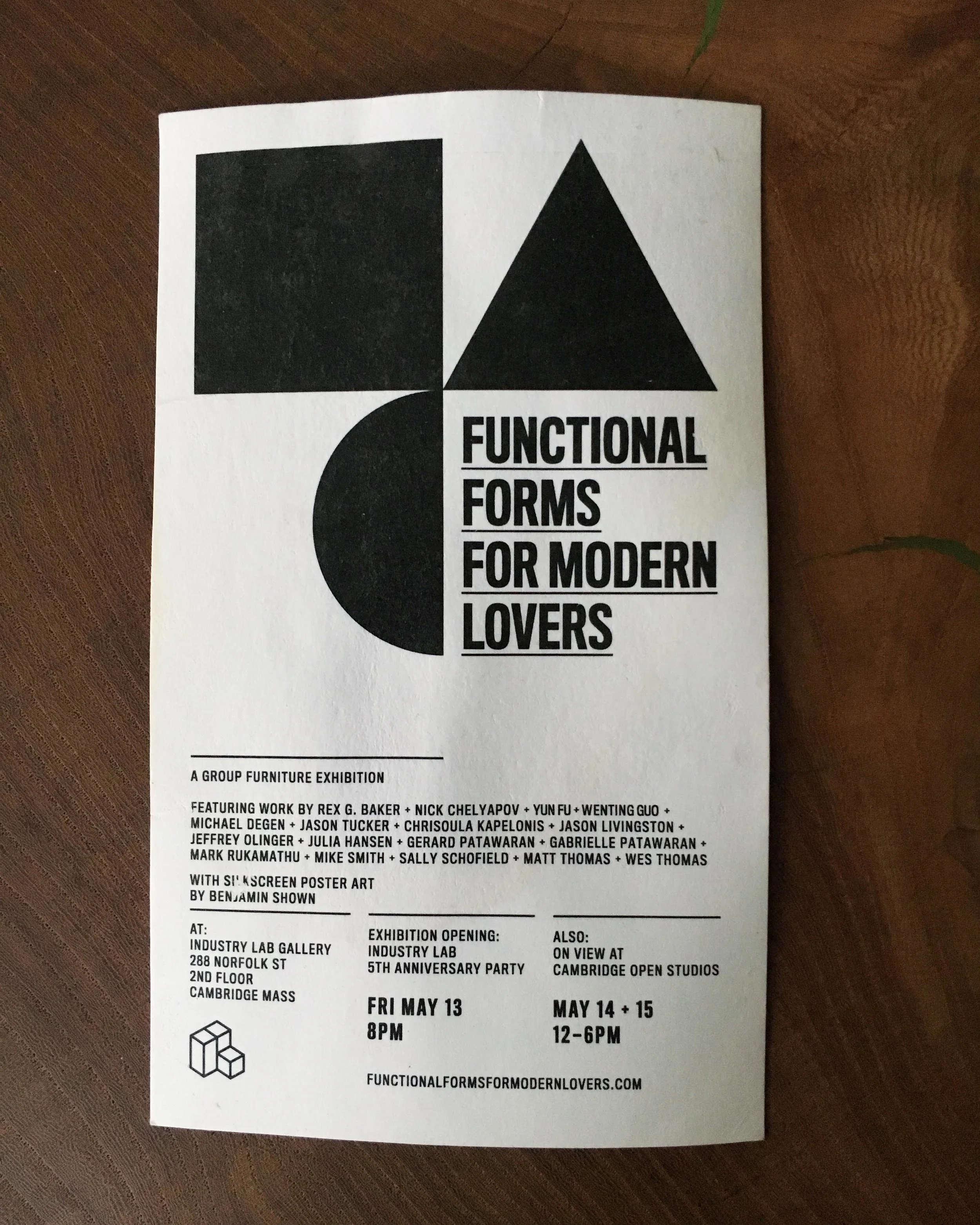



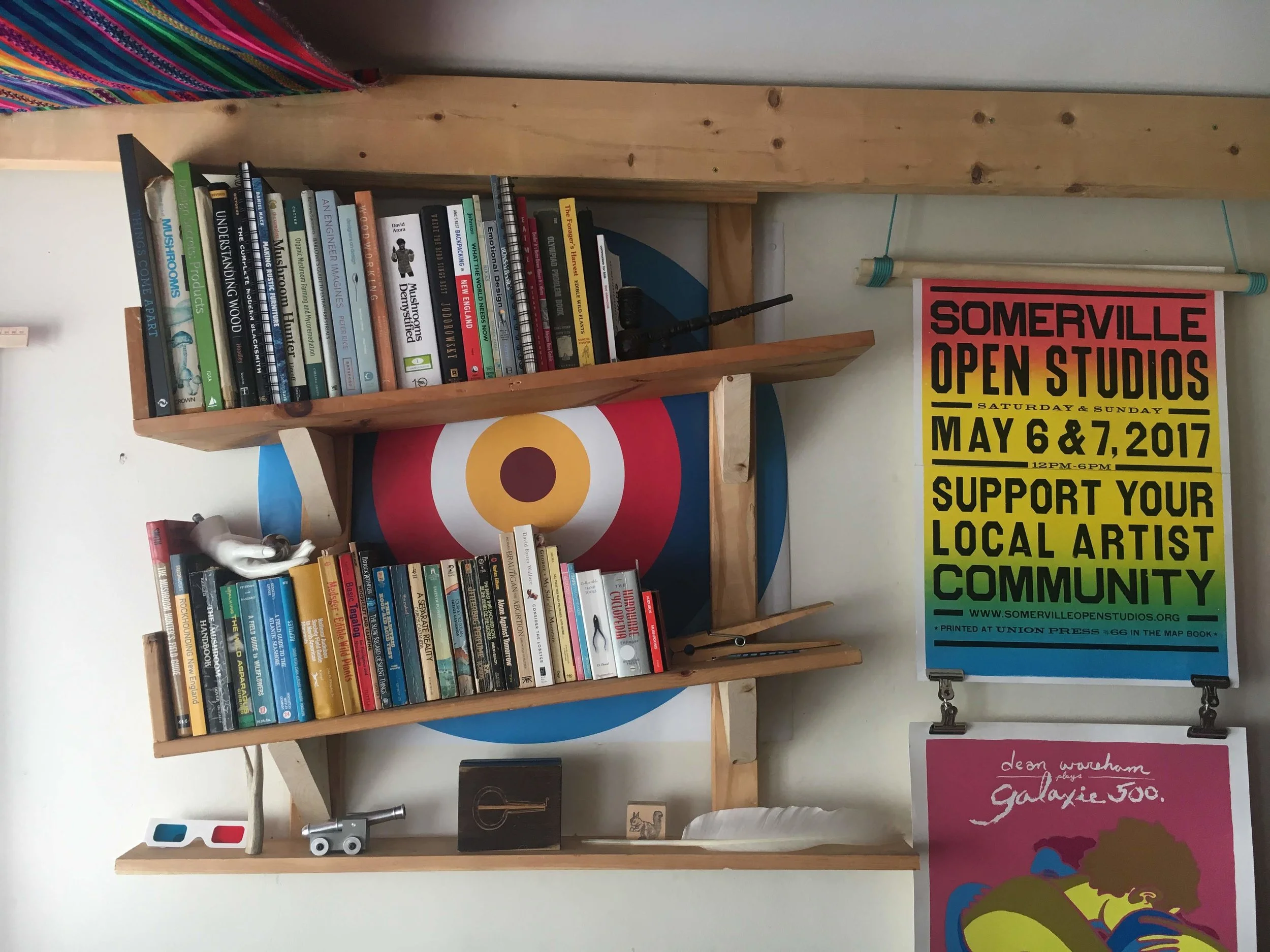

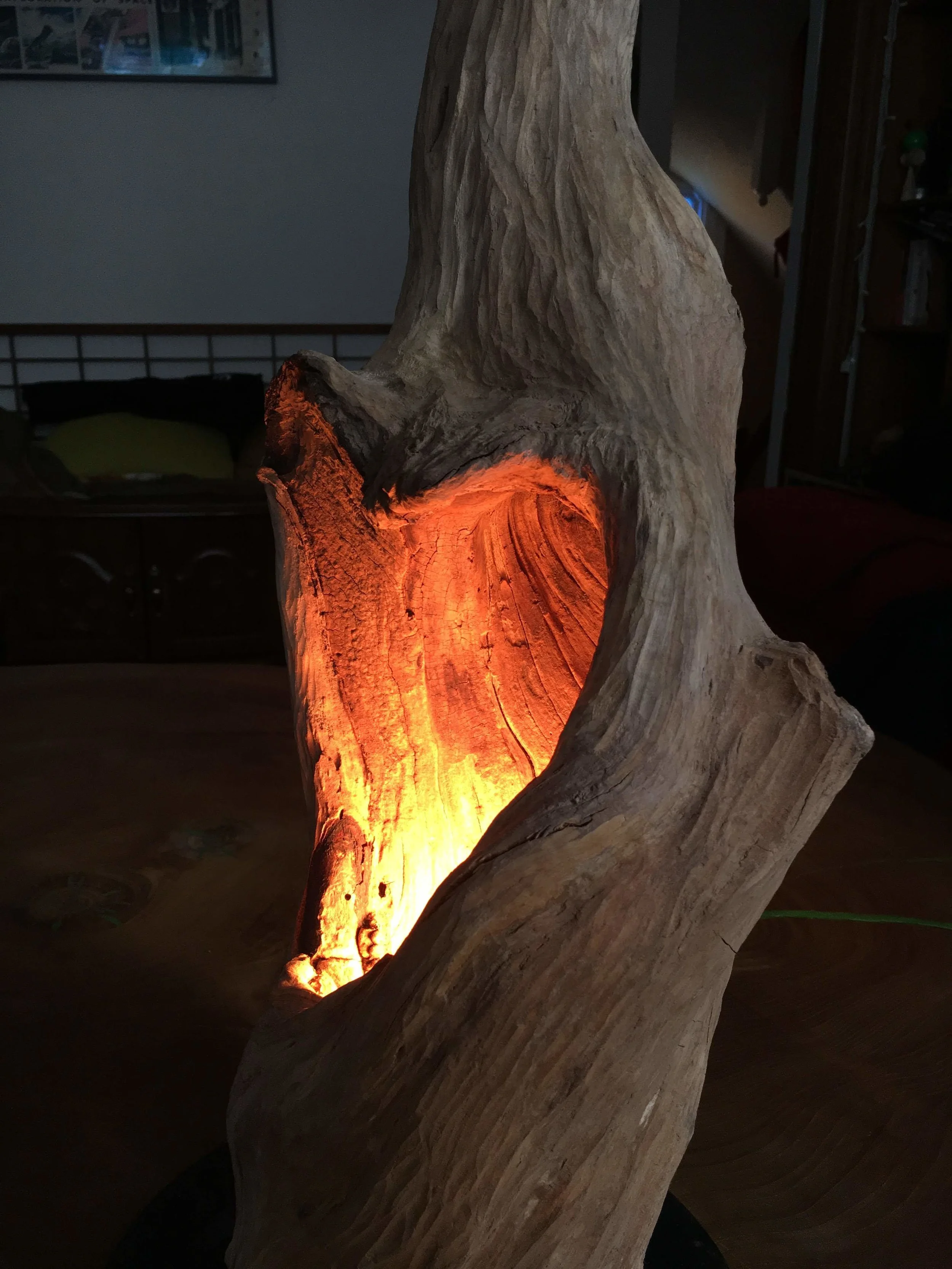
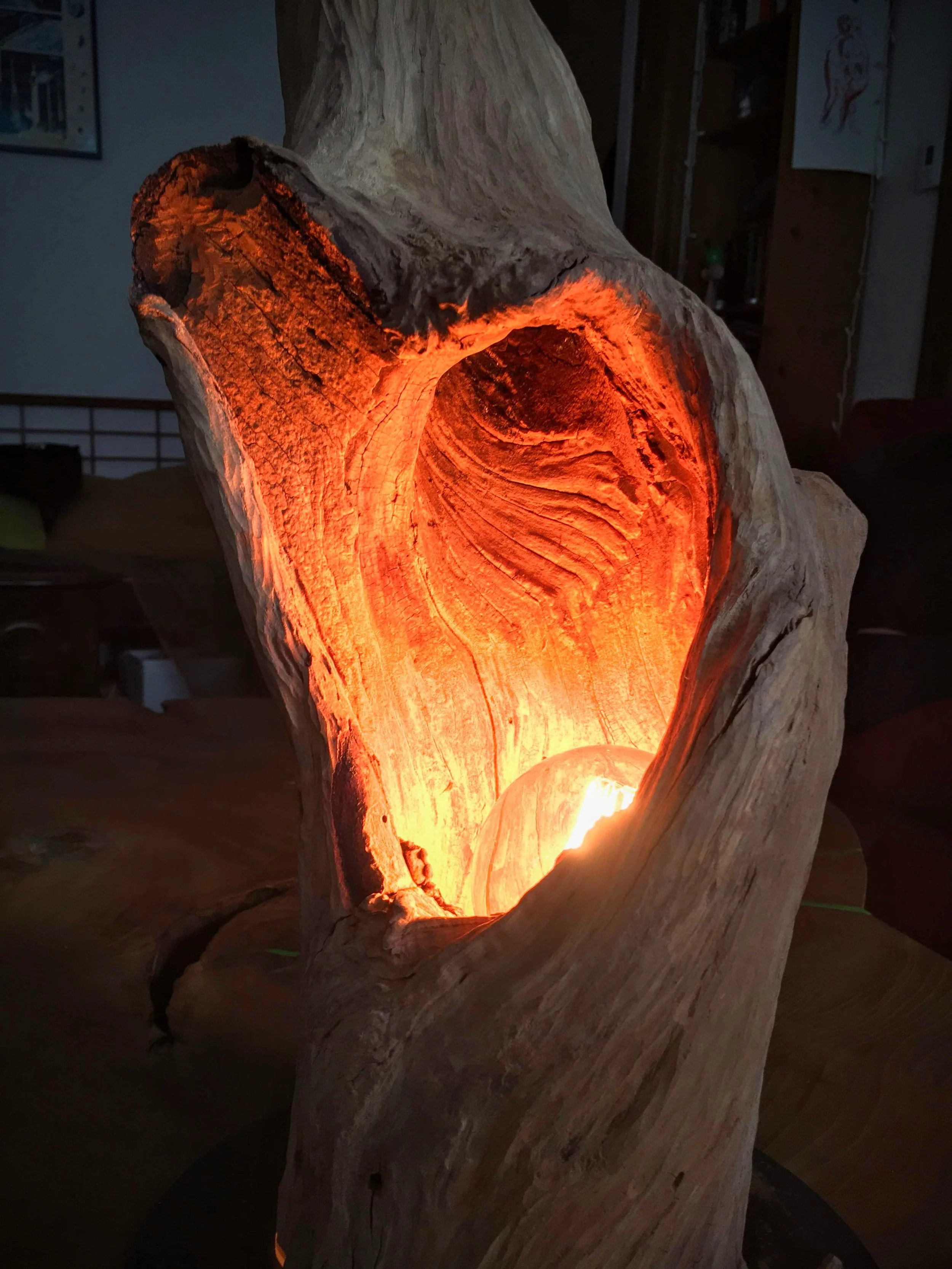
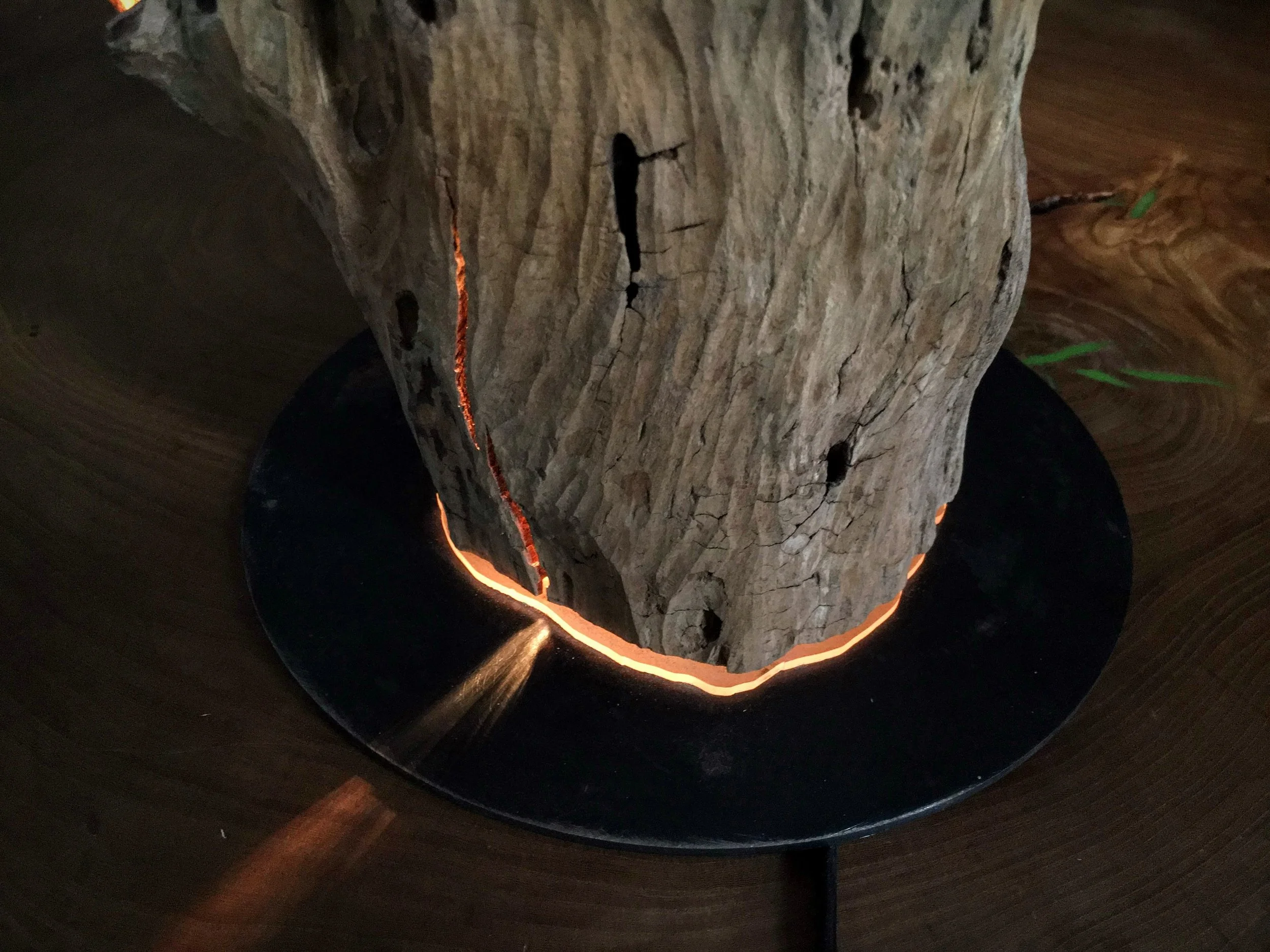
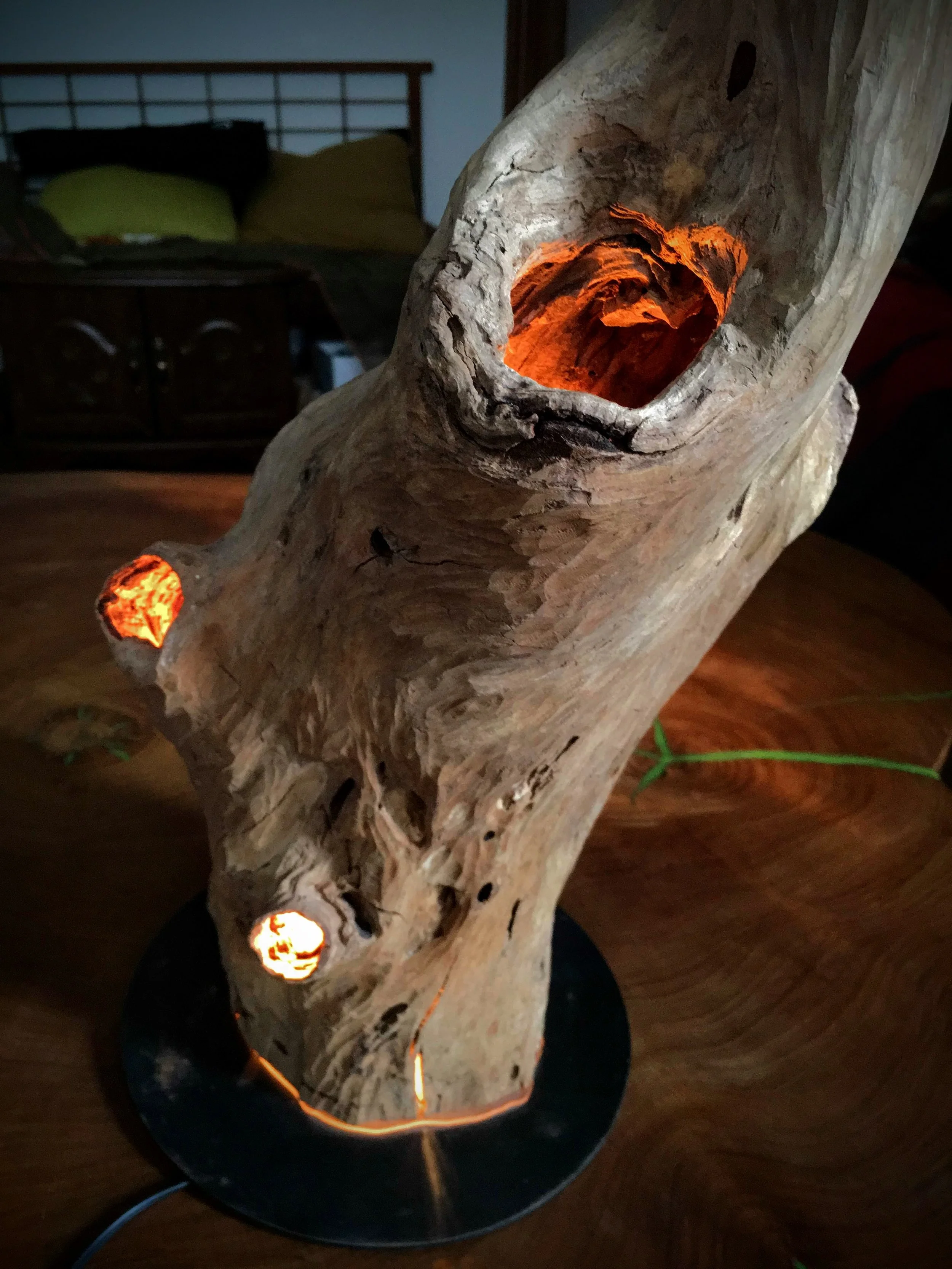

Collected Woods is a collection of woodworks that I’ve made from foraged and found wood. The minimalist design seeks to celebrate the natural forms of interesting pieces of wood. Cracks, holes, and bug tracks are highlighted rather than hidden.

This wedge of a large elm tree was found in Brooklyn in the aftermath of Hurricane Sandy. This off-cut was 6" thick on one side and less than 1" on the other and was destined to become wood chips when it was rescued.

After curing in my basement for over a year, I slowly began the process of thinning the thick side using primarily hand tools. I kept the wedge shape to preserve it’s essential character, but sought to prevent the table from warping or cracking further.

It was shown at FUNCTIONAL FORMS FOR MODERN LOVERS; a group furniture show held in honor of Industry Lab’s 5th anniversary. .

I technically had a few other pieces hidden throughout the gallery since I fabricated the white cube in the background of this photo as well. Those three plywood cubes have been used for gallery shows at Industry Lab for years now and were probably the most “functional forms” in the space.

This is a wall-mounted magnetic knife block made out of a young sugar maple with a base of scrap oak. The base detaches from the maple log and three posts and is designed to mount into studs on the wall. This allows for precise positioning and leveling without obvious fasteners since the base mounting screws are hidden behind the log and the three small post fastening screws are facing down.

Strong rare earth magnets are hidden behind each green veneer disc providing a secure hold on the knives and an obvious visual cue to where they can be placed. The layout was chosen to highlight the natural sinusoidal wobble of the maple.

The hanging bookshelf was a one day build designed hold all my books, use only wood I had already collected, and to be fabricated without using any numerical measurements. Therefore, the scrap I had on hand, in conjunction with the dimensions of the books I own, drove the design. I always wanted the shelves to be L-shaped and angled to avoid the need for bookends, but the precise dimensions were driven solely from the three original constraints.